It’s a miserable wet August evening when we arrive at Garryhill, Co Carlow, to meet Eva Milka and learn all about Gaelic Escargot – her snail-farming enterprise. While the weather might be miserable for humans the warm, wet weather is perfect for growing snails.
It’s a good job they thrive in these conditions because I wouldn’t like to be around 600,000 unhappy snails. 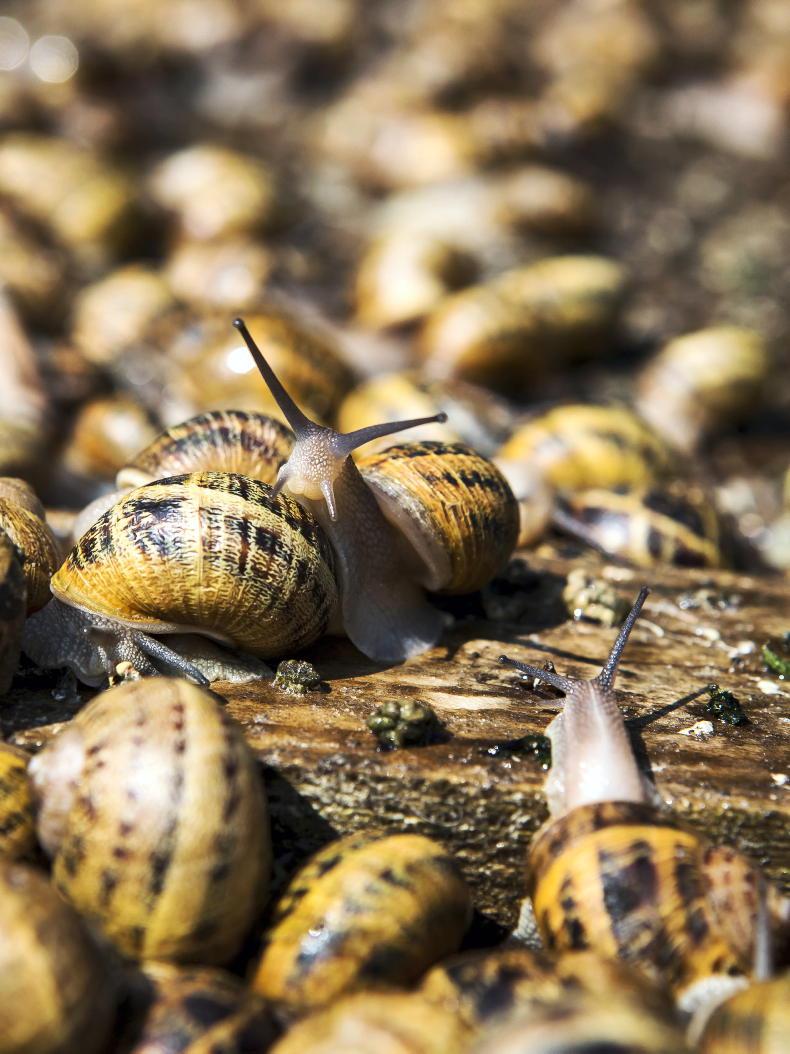
While it sounds like an enormous number of snails they actually fit into a half acre of ground which is divided into multiple sections and covered in chicken wire and staging.
Eva moved to Ireland from Poland in 2005. “I left six months before graduation from university and I don’t think my parents ever forgave me,” she says. Always interested in snails, by 2012 she was growing snails in her one-bedroom apartment.
Trial and error
Then followed four years of frustration and disappointment as Eva attempted to perfect her method of growing and processing the snails. “I was foolish to think we could just ‘cut and paste’ Polish methods of growing snails to Irish conditions. It didn’t work and I went on to fail on three other routes before I found a way. Honestly, I do not know where I got the strength to keep going,” she says.
The breeding season for snails begins in January and the eggs are hatched during March and April. It takes five months to fatten the snails, which are Irish in origin. They live and fatten on a diet of oats, calcium and a range of vitamins and vegetation. September is a very busy month as the snails have to be harvested and purged before being bagged and sent for processing to Greece. When cooked they have a shelf life of 18 months.
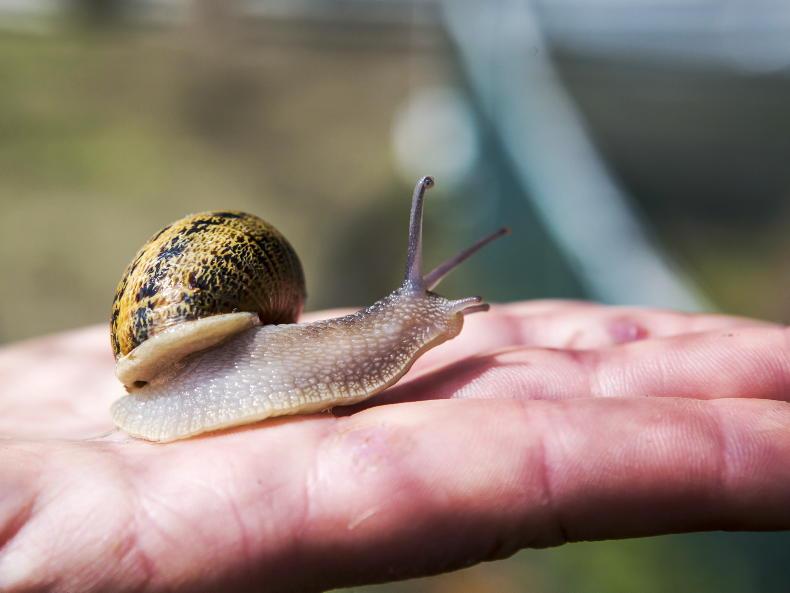
Almost fully grown Irish produced snail. \ Philip Doyle
“Currently there is nowhere to process snails in Ireland. But for the business to be viable sales need to be targeted to the food service market. Our aim is to achieve a premium price for a premium product. You can grow 5t of snails on a half-acre and wholesale they are valued at €16,000/ac. Alternatively you can aim for low volume with returns of €64,000/ac from food service.”
Mission plan
Eva’s mission is to grow a successful and sustainable business and together with other snail farmers put Ireland on the map as a supplier of quality escargot to the domestic and International markets. “We have 13 farmers in our network and our aim is to grow slow, be sustainable and successful.”
She also mentors people interested in farming snails, offering snail farming and ongoing support classes. The training can be done either on-site or online via Skype.
Eva clearly loves her snails and is determined to create a viable business while sharing her knowledge with farmers looking to diversify.
gaelicescargot.com |
085-100 0919
It’s a miserable wet August evening when we arrive at Garryhill, Co Carlow, to meet Eva Milka and learn all about Gaelic Escargot – her snail-farming enterprise. While the weather might be miserable for humans the warm, wet weather is perfect for growing snails.
It’s a good job they thrive in these conditions because I wouldn’t like to be around 600,000 unhappy snails. 
While it sounds like an enormous number of snails they actually fit into a half acre of ground which is divided into multiple sections and covered in chicken wire and staging.
Eva moved to Ireland from Poland in 2005. “I left six months before graduation from university and I don’t think my parents ever forgave me,” she says. Always interested in snails, by 2012 she was growing snails in her one-bedroom apartment.
Trial and error
Then followed four years of frustration and disappointment as Eva attempted to perfect her method of growing and processing the snails. “I was foolish to think we could just ‘cut and paste’ Polish methods of growing snails to Irish conditions. It didn’t work and I went on to fail on three other routes before I found a way. Honestly, I do not know where I got the strength to keep going,” she says.
The breeding season for snails begins in January and the eggs are hatched during March and April. It takes five months to fatten the snails, which are Irish in origin. They live and fatten on a diet of oats, calcium and a range of vitamins and vegetation. September is a very busy month as the snails have to be harvested and purged before being bagged and sent for processing to Greece. When cooked they have a shelf life of 18 months.

Almost fully grown Irish produced snail. \ Philip Doyle
“Currently there is nowhere to process snails in Ireland. But for the business to be viable sales need to be targeted to the food service market. Our aim is to achieve a premium price for a premium product. You can grow 5t of snails on a half-acre and wholesale they are valued at €16,000/ac. Alternatively you can aim for low volume with returns of €64,000/ac from food service.”
Mission plan
Eva’s mission is to grow a successful and sustainable business and together with other snail farmers put Ireland on the map as a supplier of quality escargot to the domestic and International markets. “We have 13 farmers in our network and our aim is to grow slow, be sustainable and successful.”
She also mentors people interested in farming snails, offering snail farming and ongoing support classes. The training can be done either on-site or online via Skype.
Eva clearly loves her snails and is determined to create a viable business while sharing her knowledge with farmers looking to diversify.
gaelicescargot.com |
085-100 0919









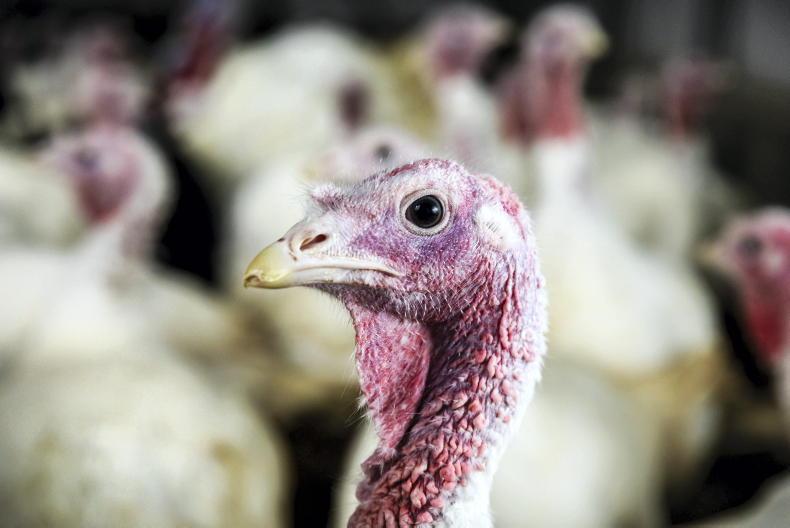
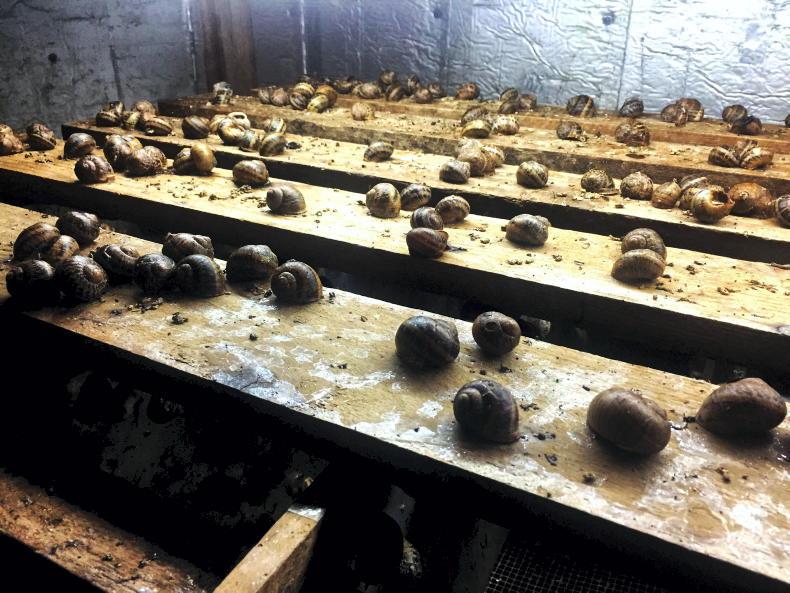
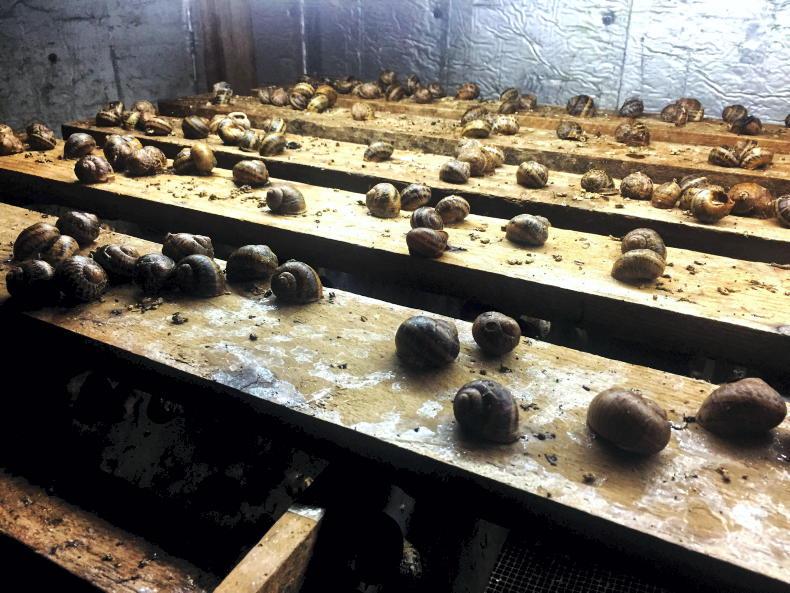
SHARING OPTIONS